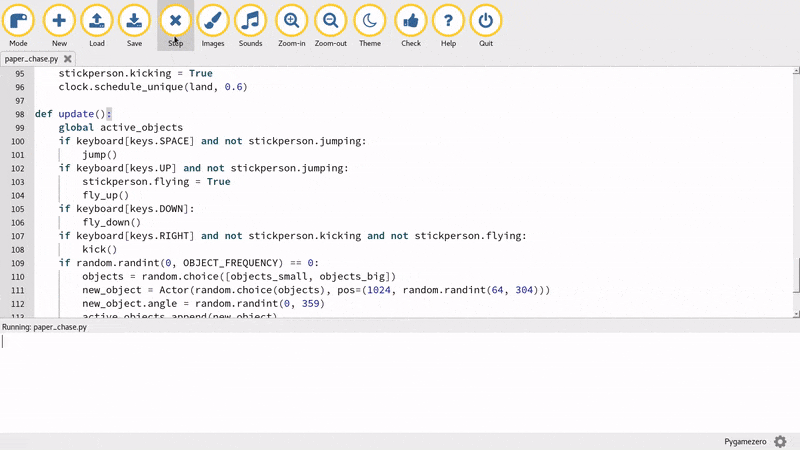Basic game mechanics in place
I've spent a couple of hours this evening adding the objects from the "real world" that our "paper world" based friend should try to avoid. It looks a bit naff at the moment because I only have three types of object (a pound coin, paper clip and coffee cup) and they appear at random, rather than in some way that aids game play / progression. I've also added the collision detection needed to check if stick figure has hit any real world objects (although this fires, it doesn't actually do anything yet because I've not drawn the death animation).
Things I've noticed:
* Writing code is easy. Manipulating / creating / finding game assets is hard (in a time consuming sort of a way).
* PyGame Zero rocks. I especially like how you catch a glimpse of the underlying PyGame framework and it's not a problem to dig down into that layer if need be.
* Just having a side scrolling "thing" isn't enough... I need to tell a story and demonstrate a sense of progress with an end goal. That's tomorrow's task.
* The game itself is still only 121 lines of code (and I want to keep it under 200, thus making it manageable for teachers and learners to grok).
My kids have agreed to help me record sound effects... a "hi-ya" for the karate kick etc... which should be hilarious to do. On a positive note, they're very interested to see how the game is progressing which bodes well for student interest if I shape this up into an educational resource. They're full of suggestions (like the karate kick) and are starting to see how relatively easy it would be to change things around.
Onwards and upwards tomorrow...